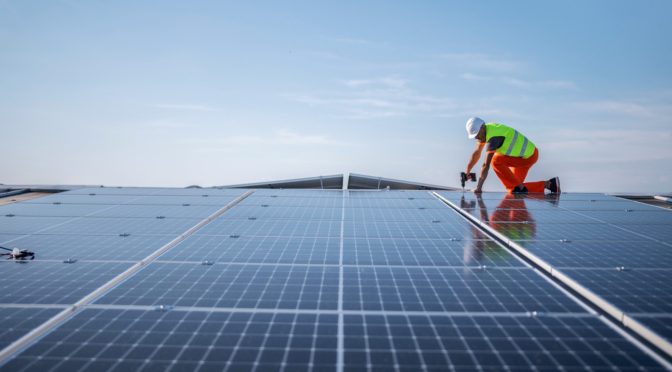The Castilla-La Mancha region of central Spain was once known for its wind turbines.
The 28 huge wind turbines of the Sierra del Romeral wind farm, located in the hills not far from the historic city of Toledo, dominate this landscape.
Operated by Iberdrola, they are part of a trend that has accelerated Spanish production of renewable energy in the last five years, giving the country a significant presence in the industry.
Spain’s total wind generation capacity, the main renewable source in recent years, has doubled since 2008. Solar energy capacity has increased eight-fold in the same period.
This makes Spain the EU member state with the second largest renewable energy infrastructure, after Sweden in first place.
Earlier this year, the prime minister of Spain’s Socialist Workers Party said Pedro Sánchez described his country as “a driving force behind the energy transition on a global scale.”
The boom began shortly after the arrival of a new government led by Sánchez in 2018, with the removal of regulatory obstacles and the introduction of subsidies for the installation of renewable energy sources. The pandemic has further accelerated the trend domestically.
“The impact of Covid has been very positive for our sector,” says José Donoso, general director of UNEF, the Spanish Photovoltaic Association, which represents the solar panel sector. “People saved money, took the time to think about what to do with it and many decided it was better to invest it in their roof than in their sofa.”
Meanwhile, the government has introduced ambitious new targets, including meeting 81% of Spain’s electricity needs by 2030 with renewable energy sources.
However, behind this success story lie concerns within the electricity sector, caused by an imbalance between supply and demand, sometimes with a surplus of electricity.
Although Spain’s economy has recovered strongly from the trauma of the Covid pandemic and is growing faster than all the bloc’s other major economies, electricity consumption has fallen in recent years.
Last year, electricity demand was even lower than in the pandemic year of 2020, and the lowest since 2003.
“What we saw until 2005 was that when GDP increased, electricity demand increased more than GDP,” says Miguel de la Torre Rodríguez, head of system development at Red Eléctrica (REE), the company that operates Spain’s national electricity grid.
More recently, he says, “we’ve seen demand grow less than GDP. What we’re seeing is a decoupling of the energy intensity of the economy.”
There are several reasons for the recent decline in demand. This includes the energy crisis caused by Russia’s invasion of Ukraine in 2022, which forced businesses and homes across Europe to cut back on consumption.
Energy efficiency has also improved and become more common.
The increased use of renewable energy has also contributed to reducing the demand for electricity from the national grid.
Mr. Rodríguez says that during the day, when solar energy production is particularly strong, the balance between supply and demand can become unbalanced, impacting prices.
“Since the energy system must always be in balance – demand must equal generation – this means there is overproduction during those hours,” he says.
“That has driven prices down, especially at certain hours when prices were zero or even negative.”
Concerns that Spain has a surplus of electricity have led to debate about the need to accelerate the ‘electrification’ of the economy, meaning it must move away from fossil fuels. The Sánchez government has set a goal of making 34% of the economy dependent on electricity by 2030.
“This process is slow and we need to speed it up,” said José Donoso of UNEF.
‘Electricity is the cheapest and most competitive way to produce clean energy.
“We need facilities that use electricity instead of fossil fuels.”
The shift to total dependence on electricity is seen as unrealistic, as some key sectors, such as chemicals and metals, will find the transition difficult.
However, Mr. Donoso and others see plenty of opportunity for faster electrification. For example, Spain lags behind many of its European neighbors when it comes to the installation of heat pumps in homes and the use of electric cars, which only account for about 6% of vehicles on the road.
Ms Pizzinato agrees that electrification is crucial, but says there are other ways to tackle the supply-demand dilemma, including phasing out the use of nuclear power plants more quickly and increasing energy storage capacity.
She says: “We need to involve more people and more industries in demand-side management, to ensure that the flexibility needed is in the system to better match generation and demand, both during the day and ‘ at night.”


